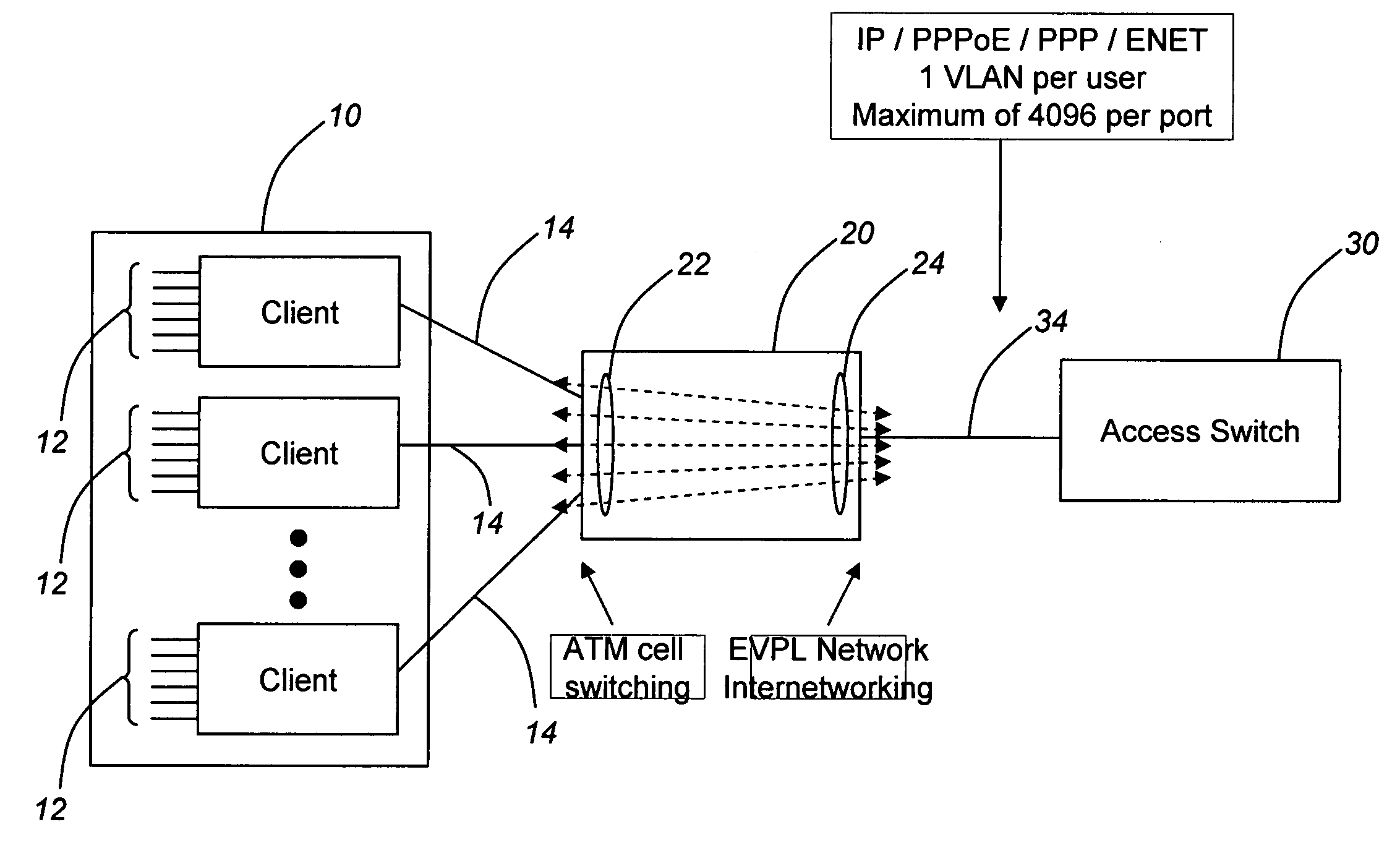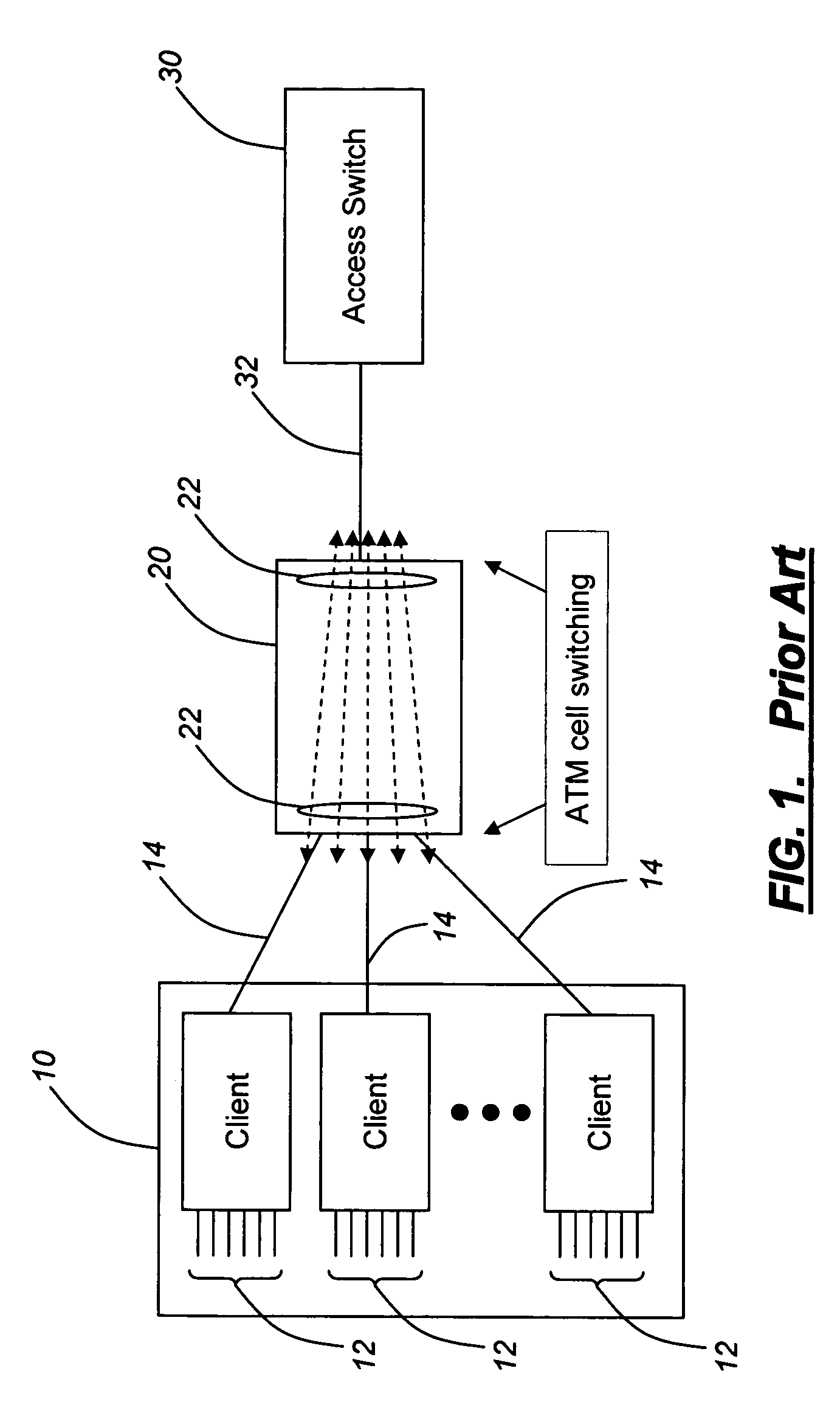Methods and systems for packet aggregation combining connection-oriented and connection-less techniques
a packet aggregation and packet technology, applied in the field of telecommunications and networking, can solve the problems of insufficient termination of inability of current ethernet-attached access switches to efficiently terminate a sufficient number of vlan ids, and large provisioning of connection-oriented techniques. to achieve the effect of removing the limitation of connection coun
- Summary
- Abstract
- Description
- Claims
- Application Information
AI Technical Summary
Benefits of technology
Problems solved by technology
Method used
Image
Examples
Embodiment Construction
[0023]In various exemplary embodiments, the present invention combines connection-oriented and connection-less techniques to provide for packet aggregation with a well-understood per-subscriber provisioning model, maintaining per-subscriber visibility, allowing layer 2 protocol internetworking, removing connection count limitations imposed by adjacent equipment, and maintaining security aspects of connection-oriented techniques. The present invention utilizes a “many-to-one” model where aggregation is done with connection-oriented techniques to forward data from the many side (e.g., clients) to the one side (e.g., an access switch) and connection-less techniques to forward data from the one side to the many side.
[0024]Referring to FIG. 1, an example of conventional methods and systems of client aggregation utilizes connection-oriented techniques such as ATM to aggregate multiple clients 10 to a single access switch 30. The multiple clients 10 connect to an aggregation platform 20 wi...
PUM
 Login to View More
Login to View More Abstract
Description
Claims
Application Information
 Login to View More
Login to View More - R&D
- Intellectual Property
- Life Sciences
- Materials
- Tech Scout
- Unparalleled Data Quality
- Higher Quality Content
- 60% Fewer Hallucinations
Browse by: Latest US Patents, China's latest patents, Technical Efficacy Thesaurus, Application Domain, Technology Topic, Popular Technical Reports.
© 2025 PatSnap. All rights reserved.Legal|Privacy policy|Modern Slavery Act Transparency Statement|Sitemap|About US| Contact US: help@patsnap.com



